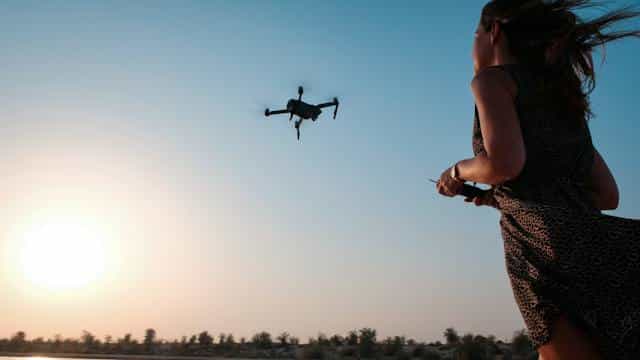The field of drone videography has become a ground-breaking one, completely changing how we view and record the environment. From breathtaking aerial shots to intricate close-ups, drones have opened up new possibilities for filmmakers, photographers, and enthusiasts alike. In this blog post, we’ll explore some intriguing facts that may not be common knowledge about the world of drone videography, shedding light on the evolution of these unmanned aerial vehicles and the remarkable capabilities they bring to the table.
Astonishingly Long History of Drones
Contrary to popular belief, the concept of drones dates back much further than the sleek, high-tech devices we see today. The first recorded use of unmanned aerial vehicles can be traced back to Austria in the mid-19th century when the Austrians launched unmanned balloons filled with explosives against Venice during the Austro-Italian War. Fast forward to the 20th century, and the development of radio-controlled aircraft during World War I marked a significant milestone in the evolution of drone technology. Nowadays, there are many different types of drones. It is vital to have the right one for the job you need to be done, as seen on the Horizon Imaging website. So, if you want to capture cinematic landscapes or track wildlife in their natural habitat, choosing the appropriate drone with the right specifications becomes paramount.
The Rise of Consumer Drones
While drones were initially confined to military applications, the landscape changed dramatically with the introduction of consumer drones. The popularization of quadcopters, equipped with high-resolution cameras, marked a turning point. DJI, a Chinese technology company, played a pivotal role in making drones accessible to the masses with their Phantom series. This democratization of drone technology paved the way for hobbyists, photographers, and filmmakers to explore the skies in ways previously unimaginable.
Advanced Camera Stabilization Techniques
One of the secrets behind the mesmerizing footage captured by drones lies in their advanced camera stabilization techniques. Gimbal technology, which enables the camera to remain steady despite the drone’s movement, has become a game-changer. This innovation allows for silky-smooth shots even in turbulent conditions, ensuring that the final footage is nothing short of cinematic perfection. This capability has elevated the quality of aerial videography to new heights.
Drone Racing Phenomenon
Beyond cinematic applications, drones have found a home in the adrenaline-fueled world of racing. Drone racing has surged in popularity, featuring high-speed, agile drones maneuvering through intricate courses. Pilots, often equipped with FPV (First Person View) goggles, navigate their drones at breakneck speeds, creating a thrilling spectator sport. This unexpected fusion of technology and sport has given rise to international competitions, showcasing the agility and precision of these small but mighty flying machines.
Legal and Ethical Considerations

Drone videography has come a long way from its humble beginnings, evolving into a dynamic and influential industry. So, whether you’re an aspiring filmmaker or simply captivated by the wonders of the skies, the realm of drone videography offers a thrilling journey into the unseen.







